These creatures are known to cause significant damage to a variety of plants, turning a once vibrant garden into a landscape of half-eaten leaves and stems.
How to Use Agapanthus for a Stunning Garden Landscape
Agapanthus, with its vibrant purple, blue or white blooms and lush foliage, has long been a favourite of gardeners and landscape designers alike. Known for their hardiness and versatility, these plants can transform any garden into a stunning oasis with the right know-how.
This article will help you understand the potential of agapanthus in enhancing garden landscapes when you use them intelligently, and how to best care for them.
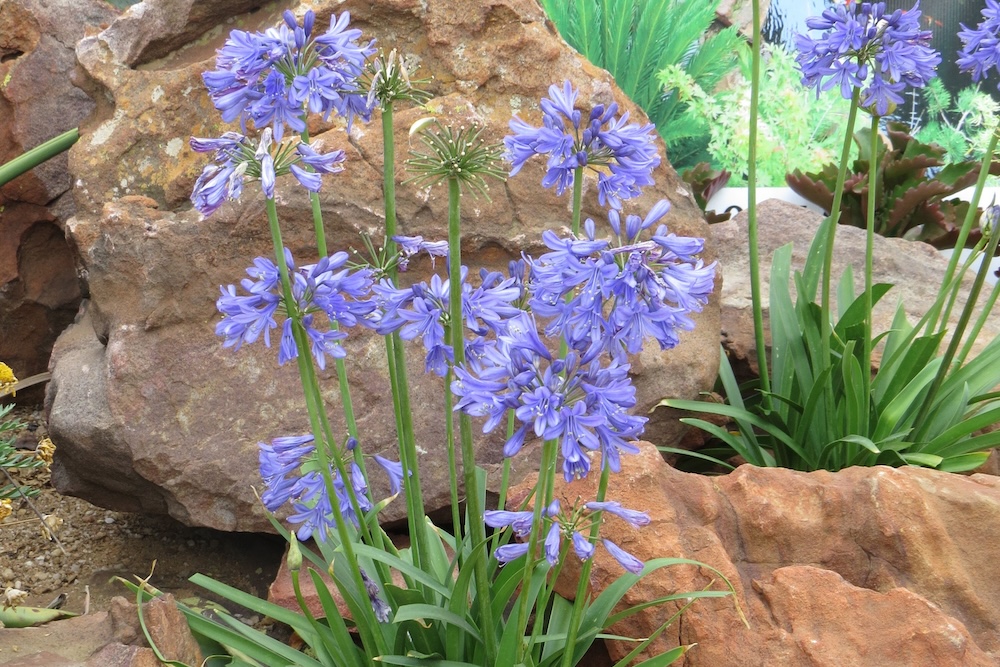
Understanding Agapanthus
Agapanthus, native to South Africa, is often referred to as the African lily. They possess a clumping habit with strappy leaves attached to rhizomes with vigorous root systems. Their flower stalks, called “umbels”, bear a globe of attractive flowers. The plant comes in many varieties, each with its unique characteristics, in a range of sizes to suit just about any space available in your garden.
When it comes to their growing needs, agapanthus aren’t too fussy. They prefer well-drained soil and can thrive in full sun to partial shade. However, they do appreciate regular watering during dry periods and some protection from harsh winter frosts in colder climates.
Why Choose Agapanthus for Garden Landscaping?
There are numerous reasons why agapanthus make a great choice for garden landscaping. Their striking appearance, easy care requirements, and versatility make them ideal for both experienced home gardeners and professional landscapers. They’re also drought-tolerant and can flourish in various soil types, making them suitable for different garden conditions.
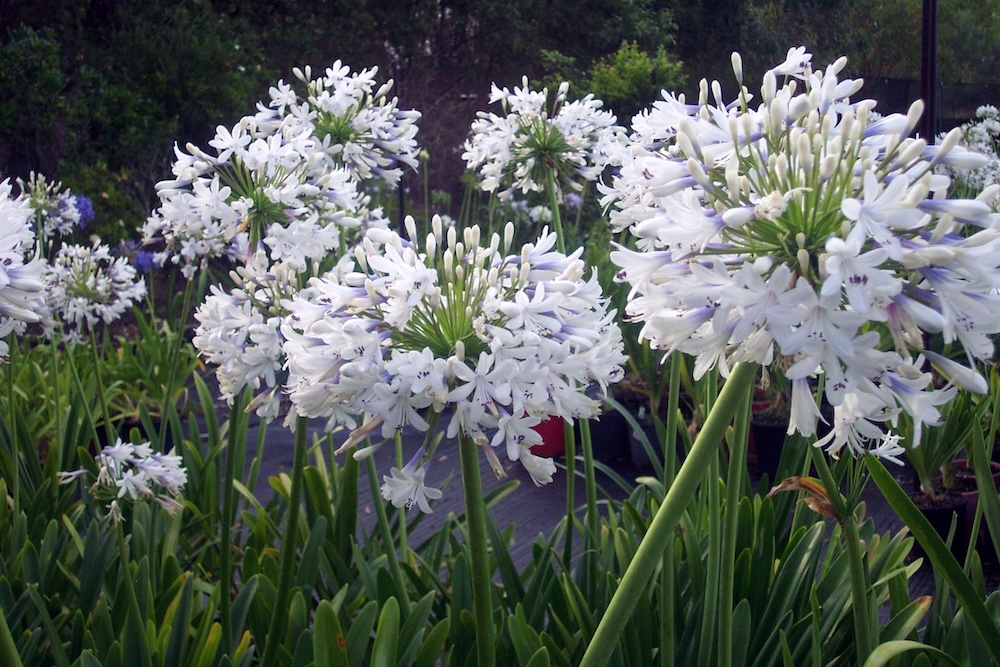
Landscaping with Agapanthus
Incorporating agapanthus into your garden landscape can add an element of sophistication and vibrancy. Whether used as border plants, in containers, pots, or as a focal point in a garden bed, their lush foliage and stunning blooms can create a captivating visual appeal.
Choosing the Right Location for Agapanthus
The best place for agapanthus is a location that receives full sun to partial shade. A south-facing aspect in Australia will have less sun than a north-facing aspect, so take that into consideration.
If you’re hoping to plant agapanthus on the south side of a slope, make sure there isn’t too much shade so that it receives enough sunlight.
While they’re quite adaptable, agapanthus plants prefer a well-drained soil to prevent waterlogging. When choosing a location for planting, consider their mature size and spread which will vary on the specific variety. They should be placed where their full beauty can be expressed without overcrowding other plants.
Planting Agapanthus Correctly
The optimal spacing for agapanthus depends on the variety, but generally, they should be planted at least a foot (30cm) apart to allow for growth and spread.
Remember, ‘leaves in the air, roots in the ground’; this means the crown of the plant should be just at or slightly above soil level. The best time to plant agapanthus is in the early spring to give their roots time to establish during the growing season.
Agapanthus Growth and Spread
Depending on the variety and growing conditions, agapanthus can take between two to three years to reach their full size. Regularly dividing overcrowded clumps every few years will keep the plants healthy and control their spread.
Many agapanthus plants can be very weedy with their vigorous seeds that will pop up new plants all over your garden. And, even worse, in the natural environment. So choose a high quality cultivated variety bred using tissue culture like Ozbreed’s catalogue of agapanthus plants.
Pruning Agapanthus
Pruning agapanthus is usually limited to removing the dead flower heads once they have faded. This not only keeps the plant looking tidy but also encourages more blooms. While some gardeners prefer to prune the foliage for a ‘neat and tidy’ look, this isn’t necessary.
The natural shape of the strappy leaves can add a beautiful cascading effect over pathways and retaining walls. If your agapanthus is outgrowing its space, consider reducing its size by removing some of the rhizomes through division.
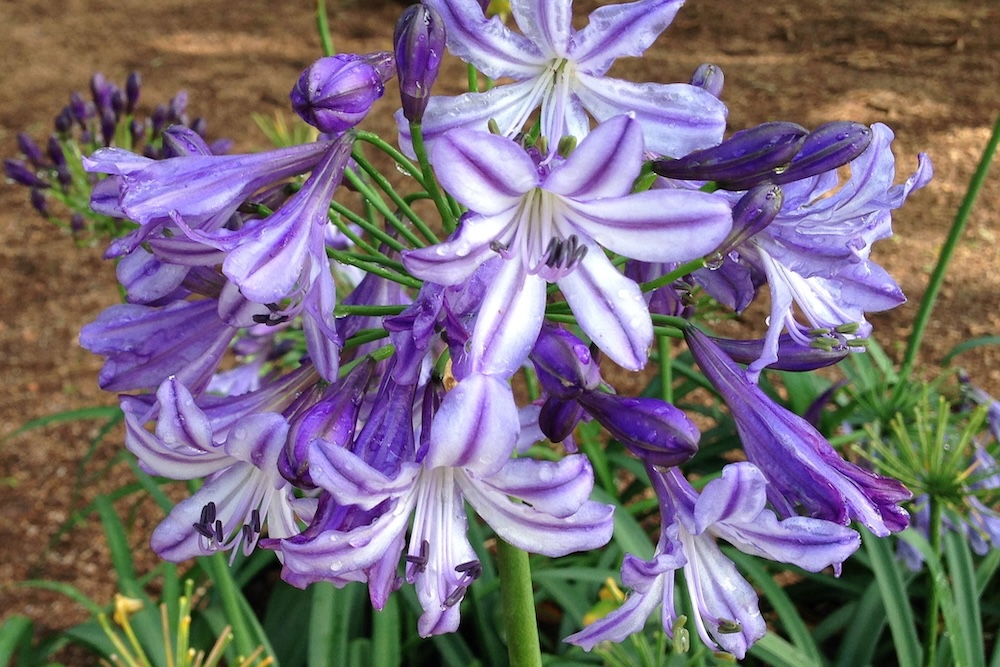
Creating Beautiful Combinations with Agapanthus
Companion planting is a concept that involves growing different types of plants together in a way that they benefit each other. The key to successful companion planting lies in selecting plants with similar growing needs and that offer aesthetic value.
For example, agapanthus plants prefer well-draining soil and plenty of sunlight. If you plant something with different needs, like maidenhair ferns or cymbidium orchids, they won’t thrive in the same bed. However, if there’s a moist, shady spot nearby, you can place it there instead.
Agapanthus plants bloom through the warmer months; if you love flowers and the other plants in your garden bloom at the same time, your garden might be a little bit boring through the cooler months. Good companion plants can ensure year-round interest.
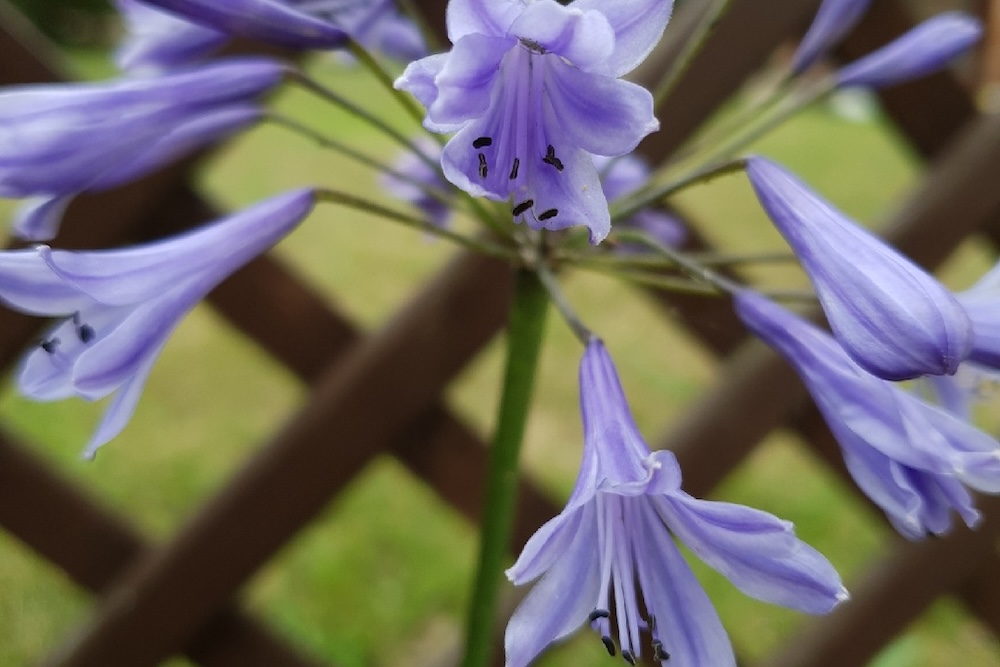
Plan your agapanthus companion plants around flowering times, growth habits, and forms. It’s important to remember that a garden is a living, changing entity.
What Looks Good Planted with Agapanthus?
There are numerous plants that can make excellent companions for agapanthus. These include roses, lavender, westringia, ornamental grasses, and even edible herbs. These plants complement agapanthus not only in terms of aesthetics but also in their similar growing requirements.
For example, roses can provide showy blooms that compliment the strappy foliage and subtle flowers of agapanthus. Lavender, with its silvery foliage and fragrant flowers, can add another layer of sensory appeal. Ornamental grasses can provide movement and soften the bold structure of agapanthus, while edible herbs add a practical element to the garden design.
Designing a Layered Look with Agapanthus
Layering in garden design involves using a variety of plants at different heights to create depth and interest. Agapanthus, with their tall flower stems, can be an excellent choice for the mid or back layer in a border. They can be paired with lower-growing plants at the front and taller shrubs or trees at the back.
Potted agapanthus (link to my article about growing agapanthus in pots) can also be used to create a layered look. By placing pots at different heights, you can create a dynamic display that draws the eye through the garden.
Caring for Your Agapanthus
The difference between a beautiful, vigorous plant and a sickly one can have a significant impact on the overall aesthetic of your garden. Proper care ensures your agapanthus plants remain healthy and attractive throughout the year.
Agapanthus, once established in the right spot, requires minimal care. Regular watering during dry periods, applying a slow-release fertiliser in spring, and removing dead heads after flowering will keep them looking their best. When their clumps grow into the wrong parts of the garden, you can divide the plants by the rhizome.
They’re generally pest and disease-resistant, but keep an eye out for mealy bugs, snails and slugs which can damage the foliage.
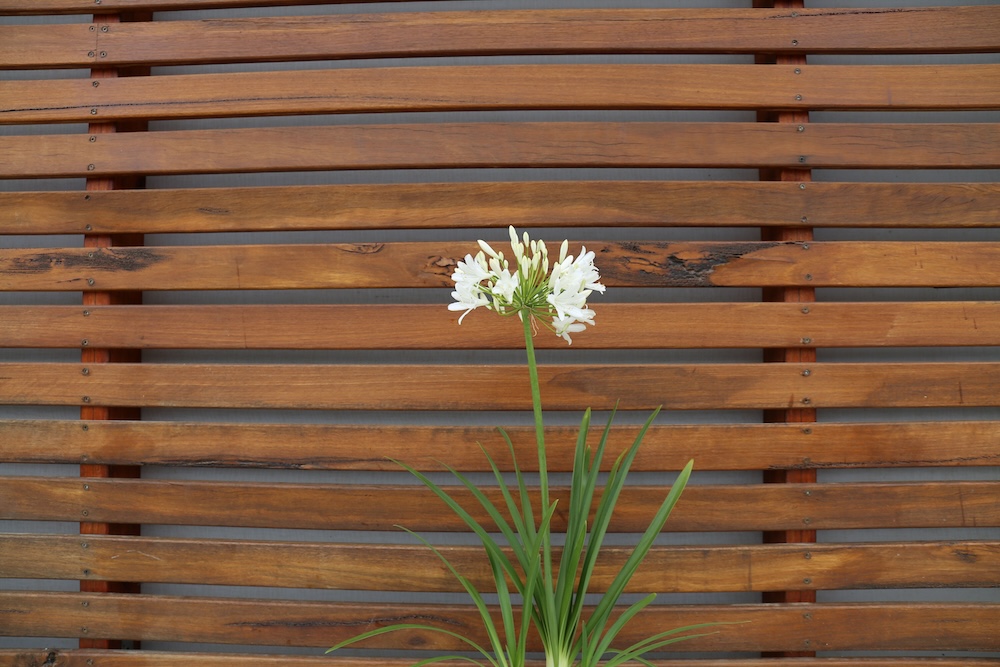
Daniel’s Wrap
Incorporating agapanthus into your garden landscape a great choice. Remember to consider aspects like location, companion planting, and proper care to ensure your agapanthus thrives.
Don’t be afraid to experiment and try different combinations to discover what works best for your garden. With the right approach, agapanthus is a plant that can truly transform your garden into a stunning oasis.

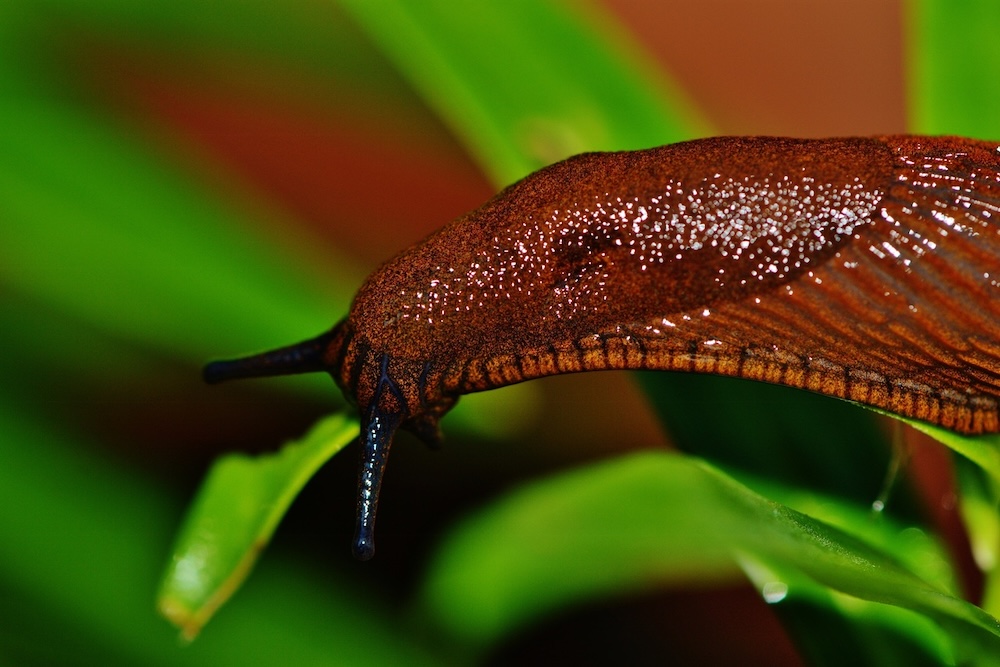
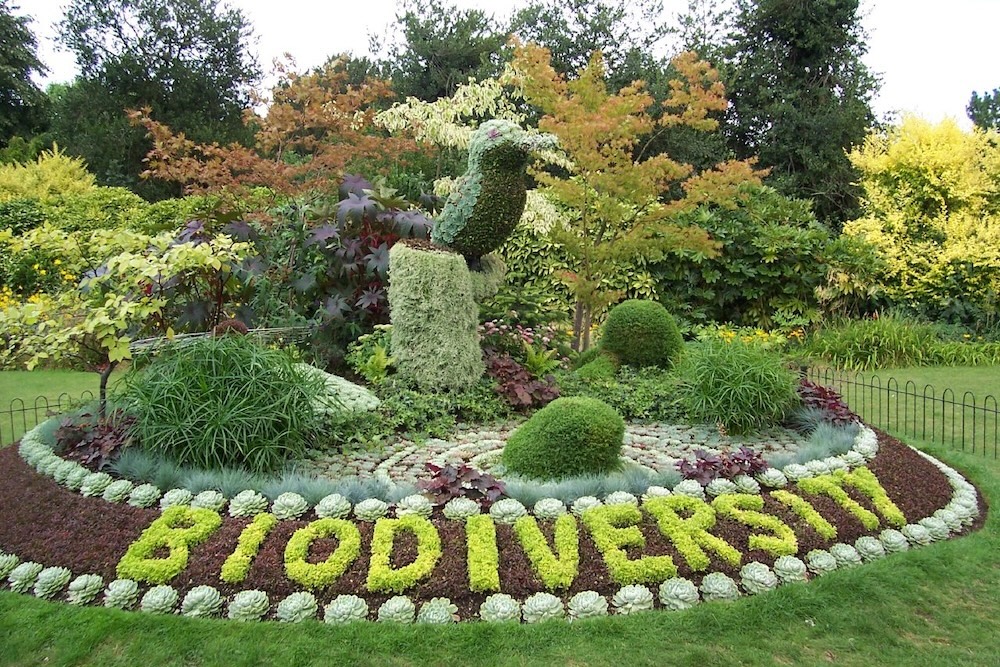
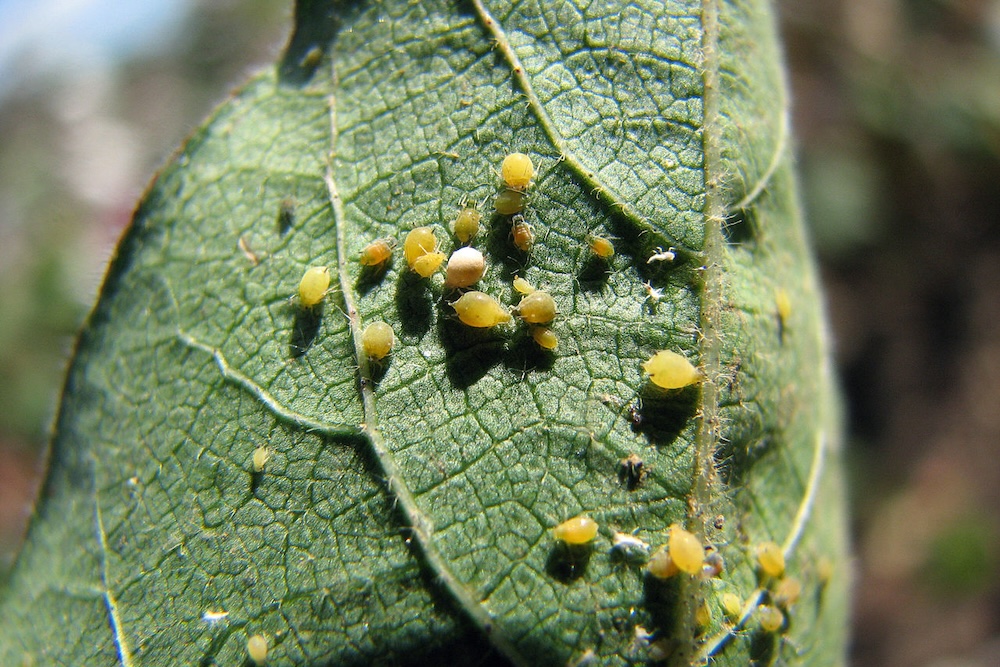
This Post Has 0 Comments